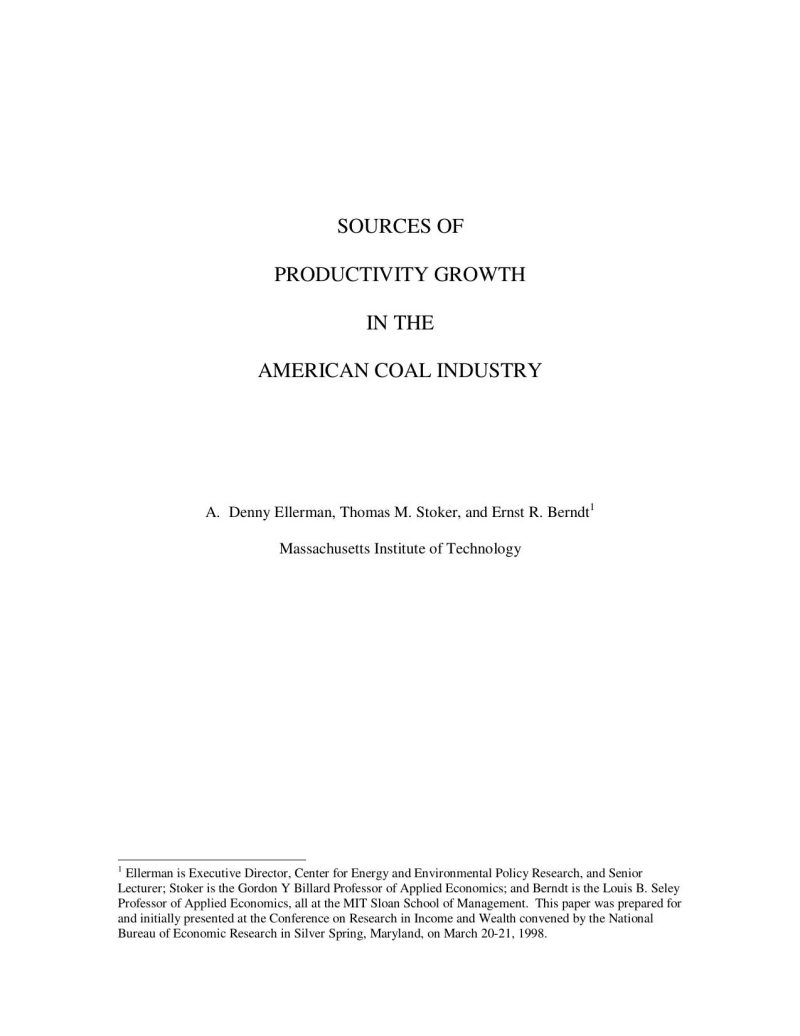Sources of Productivity Growth in the American Coal Industry
A. Denny Ellerman, Thomas M. Stoker, and Ernst R. Berndt
Mar-98
This paper exploits a large mine-level database to contribute to our understanding of the micro-sources of productivity growth. The database contains observations for labor input and coal output at every mine in the United States from 1972 through 1995, as well as a number of characteristics pertaining to technology, location and ownership. The research proceeds in two stages. Because of the pronounced heterogeneity of this industry, we divide the national data into eleven sub-aggregates, according to geography and mining technology, and calculate indices of national coal mining productivity growth that are corrected for heterogeneity. The second stage of the research is the application of panel regression techniques to each of the eleven relatively homogeneous sub-aggregates. By this process, we are able to identify and to quantify four sources of productivity change: the level of annual output, the price of output relative to labor, mine-specific fixed effects and residual time effects. The last effect accounts for only a small part of the remarkable improvement in coal mining labor productivity that has been observed since the late 1970s.



